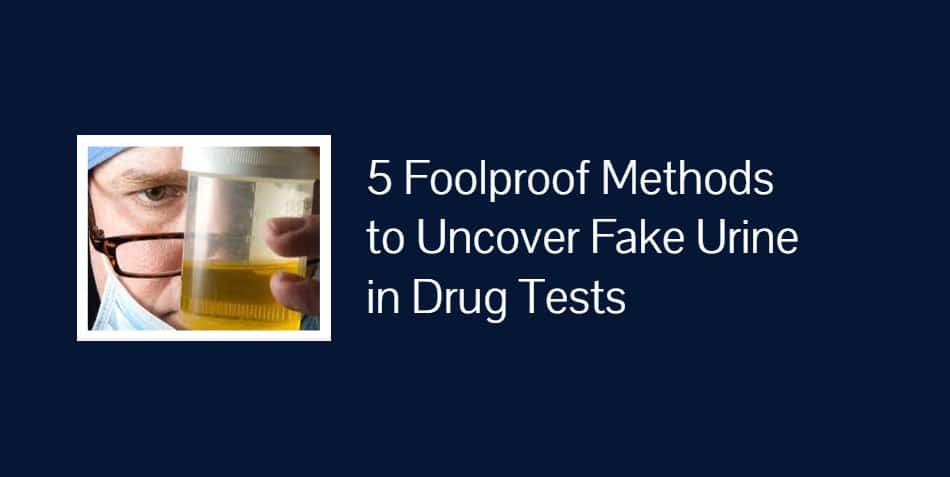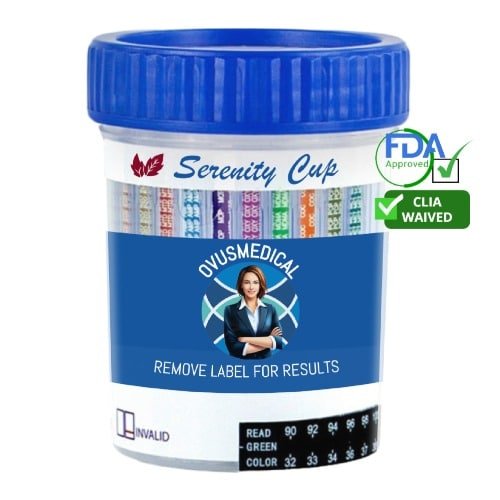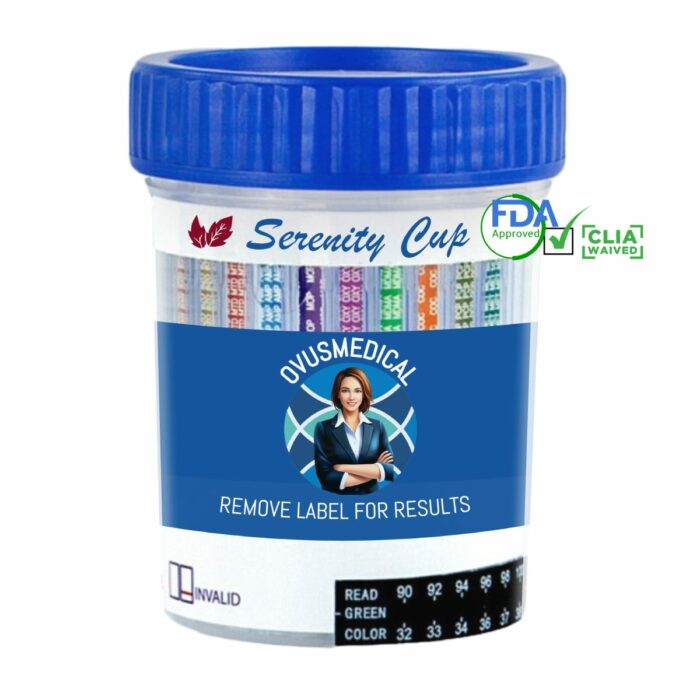Detecting fake urine in drug tests requires a keen eye and a thorough understanding of the telltale signs. From examining temperature and color to analyzing the presence of specific compounds, we’ll walk you through the most effective techniques for identifying counterfeit samples.
By highlighting the key indicators and providing expert insights into the testing process, this article will empower you to spot fake urine and ensure the integrity of drug testing procedures. Say goodbye to false positives and inaccurate results with our foolproof methods. So, let’s dive in and learn how to stay one step ahead of those attempting to cheat the system.
The Importance of Detecting Fake Urine In Drug Tests
Drug tests are crucial for maintaining safety in various settings, including workplaces and sports competitions. The accuracy of these tests is of utmost importance, as false negatives or false positives can have serious consequences.
Individuals who are using drugs may attempt to fool the system by submitting fake urine samples, which can undermine the effectiveness of drug testing protocols. Therefore, it is vital to have reliable methods in place to uncover fake urine and ensure the integrity of the testing process.
Method 1: Temperature Testing
One of the first and easiest ways to detect fake urine is by testing its temperature. Real urine is naturally warm when it is freshly produced and is usually around 98 to 100 degrees Fahrenheit (36 to 38 degrees Celsius).
Drug testing facilities often have temperature strips or digital thermometers to measure the temperature of urine samples. If the sample’s temperature falls outside the expected range, it could be an indication of fake urine.
To perform temperature testing, start by ensuring that the sample is at room temperature. Then, use a thermometer or the provided temperature strip7\
0to measure the urine’s temperature.
If it is significantly colder or hotter than the expected range, it may be a sign that the sample is fake. However, keep in mind that temperature alone cannot conclusively prove the authenticity of the urine sample, as some individuals may attempt to maintain the correct temperature using heating pads or other methods.
Method 2: Smell Testing
Real urine has a distinct odor that may vary depending on a person’s hydration levels and diet. While it may not be the most pleasant smell, it is an unmistakable characteristic of genuine urine. On the other hand, fake urine is typically odorless or may have an artificial smell that does not resemble real urine.
To conduct a smell test, carefully open the urine sample container and take a whiff. If the sample has no smell at all or has an unusual, chemical-like odor, it could be an indication that it is fake. However, it is important to note that some synthetic urine products on the market claim to have a natural odor, so relying solely on smell may not provide definitive results.
Method 3: Color Testing
The color of urine can provide valuable insights into its authenticity. Real urine can range in color from pale yellow to amber, depending on factors such as hydration levels and diet. On the other hand, fake urine may have an abnormal color that does not resemble natural urine.
To perform a color test, visually inspect the urine sample in a well-lit area. Compare the color of the sample to a color chart or your knowledge of what real urine looks like. If the sample appears too clear or has an unnatural hue, it may be an indication of fake urine.
However, keep in mind that some synthetic urine products claim to replicate the color of real urine, so color testing alone may not be foolproof.
Method 4: Foam Testing
Another method to uncover fake urine in a drug test is by examining the foam or bubbles that form when the sample is shaken or agitated. Real urine typically produces minimal foam that quickly dissipates. In contrast, fake urine may produce excessive foam or bubbles that persist for an extended period of time.
To conduct a foam test, gently shake the urine sample container or swirl its contents. Observe the foam that forms and note its behavior.
If the foam is excessive and lingers for an unusually long time, it could be a sign that the urine sample is fake. However, it is important to consider other factors, such as the specific product used, as some synthetic urine products may intentionally produce minimal foam to mimic real urine.
Method 5: pH Testing
The pH level of urine can also be an indicator of its authenticity. Real urine usually has a pH level between 4.6 and 8, slightly leaning towards the acidic side. However, fake urine may have a pH level that deviates significantly from this range.
To perform a pH test, use pH testing strips or a pH meter to measure the acidity or alkalinity of the urine sample. Dip the testing strip into the sample or use the provided dropper to apply a few drops to the strip. Compare the resulting color to the pH chart provided with the testing kit.
If the pH level falls outside the expected range, it may be an indication of fake urine. However, it’s worth noting that some synthetic urine products claim to mimic real urine pH levels, so pH testing alone may not always be conclusive.
Common Signs of Fake Urine
While the aforementioned methods can help detect fake urine, it’s important to be aware of other common signs that may indicate the use of counterfeit samples. Some additional indicators include:
- Unusual packaging: Fake urine may come in suspicious or unconventional packaging that does not resemble the standard urine sample containers used in drug testing facilities.
- Inaccurate labeling: Fake urine samples may have labels that are incorrect or misspelled, or they may not match the information the test subject provided.
- Lack of relevant compounds: Real urine contains various compounds, such as creatinine, uric acid, and urea, which can be detected through laboratory tests. Fake urine may lack these compounds or may contain them in abnormal concentrations.
- Inadequate sample volume: Drug testing facilities typically require a specific minimum volume of urine for testing. If the sample provided is significantly below the required volume, it may be a sign of fake urine.
By being observant and familiarizing yourself with these common signs, you can further increase your ability to uncover fake urine in drug tests.
How to Avoid Using Fake Urine in Drug Tests
While this article focuses on detecting fake urine, it is essential to emphasize the importance of integrity when it comes to drug testing. Attempting to cheat the system by using counterfeit samples not only undermines the purpose of drug tests but also carries potential legal and professional consequences.
To avoid resorting to fake urine, consider the following tips:
- Understand the risks: Familiarize yourself with the potential consequences of using fake urine, such as termination from employment, legal action, or disqualification from sports competitions. Understanding the risks can deter you from attempting to cheat the system.
- Seek alternatives: If you are concerned about the potential outcome of a drug test, explore legal alternatives to drug use or consider seeking professional help if you have substance abuse issues.
- Stay informed: Stay updated on drug testing protocols and any changes to testing methods to ensure you are aware of the most effective detection techniques. By staying informed, you can make informed decisions and avoid falling into the trap of using fake urine in drug tests.
Remember, honesty and integrity are essential in maintaining trust and ensuring the accuracy of drug testing results.
Conclusion
Drug tests play a crucial role in various settings, and the accuracy of these tests is of the utmost importance. To ensure the integrity of drug testing procedures, it is vital to have reliable methods in place to uncover fake urine in drug tests.
By utilizing temperature testing, smell testing, color testing, foam testing, and pH testing, individuals can significantly increase their ability to detect counterfeit samples. Additionally, being aware of common signs of fake urine and avoiding its use altogether can further contribute to the accuracy and effectiveness of drug testing protocols.
Let’s prioritize honesty and integrity when it comes to drug tests, and together, we can maintain a safer and more reliable environment.
You may also like…
-
12 Panel Drug Test Cup With PCP
As Low As $1.99
FDA/Clia Waived
$3.09 Info & Price This product has multiple variants. The options may be chosen on the product page -
12 Panel Drug Test Cup TCA
As Low As $2.29
FDA/Clia Waived
$3.09 Info & Price This product has multiple variants. The options may be chosen on the product page



